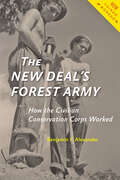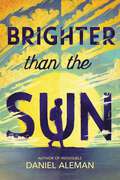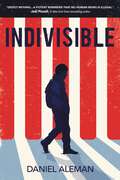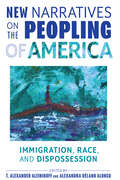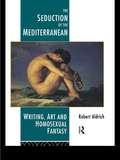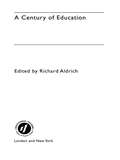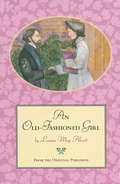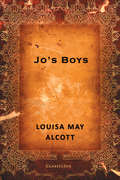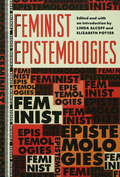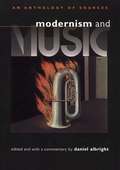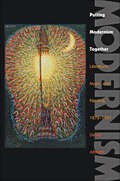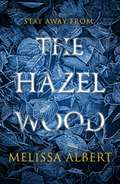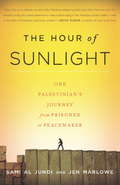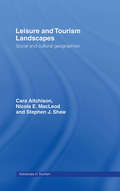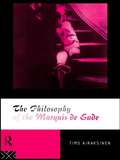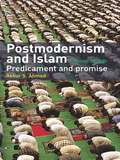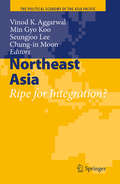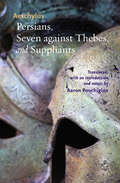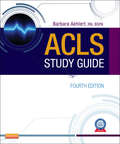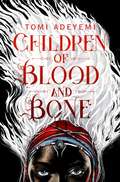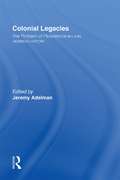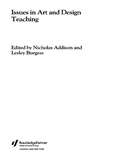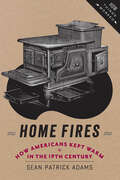- Table View
- List View
The New Deal's Forest Army: How the Civilian Conservation Corps Worked (How Things Worked)
by Benjamin F. AlexanderPropelled by the unprecedented poverty of the Great Depression, President Franklin D. Roosevelt established an array of massive public works programs designed to provide direct relief to America;€™s poor and unemployed. The New Deal;€™s most tangible legacy may be the Civilian Conservation Corps;€™s network of parks, national forests, scenic roadways, and picnic shelters that still mark the country;€™s landscape. CCC enrollees, most of them unmarried young men, lived in camps run by the Army and worked hard for wages (most of which they had to send home to their families) to preserve America;€™s natural treasures. In The New Deal;€™s Forest Army, Benjamin F. Alexander chronicles how the corps came about, the process applicants went through to get in, and what jobs they actually did. He also explains how the camps and the work sites were run, how enrollees spent their leisure time, and how World War II brought the CCC to its end. Connecting the story of the CCC with the Roosevelt administration;€™s larger initiatives, Alexander describes how FDR;€™s policies constituted a mixed blessing for African Americans who, even while singled out for harsh treatment, benefited enough from the New Deal to become an increasingly strong part of the electorate behind the Democratic Party. The CCC was the only large-scale employment program whose existence FDR foreshadowed in speeches during the 1932 campaign;¢;‚¬;€?and the dearest to his heart throughout the decade that it lasted. Alexander reveals how the work itself left a lasting imprint on the country;€™s terrain as the enrollees planted trees, fought forest fires, landscaped public parks, restored historic battlegrounds, and constructed dams and terraces to prevent floods. A uniquely detailed exploration of life in the CCC, The New Deal;€™s Forest Army compellingly demonstrates how one New Deal program changed America and gave birth to both contemporary forestry and the modern environmental movement.
Brighter Than the Sun
by Daniel AlemanThis timely and thought-provoking story about a teen girl shouldering impossibly large responsibilities and ultimately learning that she doesn&’t have to do it alone is the perfect follow-up to Daniel Aleman's award-winning debut novel, Indivisible. Every morning, sixteen-year-old Sol wakes up at the break of dawn in her hometown of Tijuana, Mexico and makes the trip across the border to go to school in the United States. Though the commute is exhausting, this is the best way to achieve her dream: becoming the first person in her family to go to college. When her family&’s restaurant starts struggling, Sol must find a part-time job in San Diego to help her dad put food on the table and pay the bills. But her complicated school and work schedules on the US side of the border mean moving in with her best friend and leaving her family behind. With her life divided by an international border, Sol must come to terms with the loneliness she hides, the pressure she feels to succeed for her family, and the fact that the future she once dreamt of is starting to seem unattainable. Mostly, she&’ll have to grapple with a secret she&’s kept even from herself: that maybe she&’s relieved to have escaped her difficult home life, and a part of her may never want to return.
Indivisible
by Daniel AlemanThis timely, moving debut novel follows a teen's efforts to keep his family together as his parents face deportation.Mateo Garcia and his younger sister, Sophie, have been taught to fear one word for as long as they can remember: deportation. Over the past few years, however, the fear that their undocumented immigrant parents could be sent back to Mexico has started to fade. Ma and Pa have been in the United States for so long, they have American-born children, and they're hard workers and good neighbors. When Mateo returns from school one day to find that his parents have been taken by ICE, he realizes that his family's worst nightmare has become a reality. With his parents' fate and his own future hanging in the balance, Mateo must figure out who he is and what he is capable of, even as he's forced to question what it means to be an American.Daniel Aleman's Indivisible is a remarkable story—both powerful in its explorations of immigration in America and deeply intimate in its portrait of a teen boy driven by his fierce, protective love for his parents and his sister.
New Narratives On The Peopling Of America: Immigration, Race, And Dispossession
by T. Alexander Aleinikoff Alexandra Délano AlonsoThe Seduction of the Mediterranean: Writing, Art and Homosexual Fantasy
by Robert AldrichThrough an explanation of forty figures in European culture, ^The Seduction of the Mediterranean argues that the Mediterranean, classical and contemporary, was the central theme in homoerotic writing and art from the 1750s to the 1950s. Episodes of exile, murder, drug-taking, wild homosexual orgies and court cases are woven into an original study of a significant theme in European culture. The myth of a homoerotic Mediterranean made a major contribution to general attitudes towards Antiquity, the Renaissance and modern Italy and Greece.
A Century of Education
by Richard AldrichEducation is a country's biggest business and the most important shared experience of those who live in it. A Century of Education provides an accessible, authoritative and fascinating overview of the role and nature of education in the twentieth century. Eminent historian of education, Professor Richard Aldrich has assembled a team of contributors, all noted experts in their respective fields, to review the successes and failures of education in the last century and to look forward to the next. A succinct overview of twentieth century social, economic, political and intellectual developments in the first chapter is followed by chapters on ten key topics. Each chapter has four sections: a review of the educational situation in 2000; a similar assessment in 1900; changes and continuities throughout the century; and a conclusion reviewing the lessons for today and tomorrow. This is a work of information, interpretation and reference, which demonstrates the strengths and weaknesses of education during the twentieth century and identifies educational priorities for the twenty first. For anyone interested in what has become the most important Issue of our time, this unique book is set to become a classic text.
An Old-Fashioned Girl: Large Print
by Louisa May AlcottPolly's friendship with the wealthy Shaws of Boston helps them to build a new life and teaches her the truth about the relationship between happiness and riches.
Jo's Boys: And How They Turned Out
by Louisa AlcottThe little men of Plumfield are now grown and making their ways in the world. But even as their pursuits take them far from home, "Mother" Jo March continues to play an inspiring and steadying role in their lives.Through adventures great and small, Tommy, Emil, Demi, Nat, Dan, and the rest of the March children experience love and loss, but never forget the lessons they learned from Meg, Jo, and Amy March—the little women who have guided them from childhood.Be it mystery, romance, drama, comedy, politics, or history, great literature stands the test of time. ClassicJoe proudly brings literary classics to today's digital readers, connecting those who love to read with authors whose work continues to get people talking. Look for other fiction and non-fiction classics from ClassicJoe.
Feminist Epistemologies (Thinking Gender)
by Linda Alcoff Elizabeth PotterFirst published in 1993. Routledge is an imprint of Taylor & Francis, an informa company.
Modernism and Music: An Anthology of Sources (Hopkins Studies In Modernism Ser.)
by Daniel AlbrightIf in earlier eras music may have seemed slow to respond to advances in other artistic media, during the modernist age it asserted itself in the vanguard. Modernism and Music provides a rich selection of texts on this moment, some translated into English for the first time. It offers not only important statements by composers and critics, but also musical speculations by poets, novelists, philosophers, and others-all of which combine with Daniel Albright's extensive, interlinked commentary to place modernist music in the full context of intellectual and cultural history.
Putting Modernism Together: Literature, Music, and Painting, 1872–1927 (Hopkins Studies in Modernism)
by Daniel AlbrightHow do you rationally connect the diverse literature, music, and painting of an age? Throughout the modernist era�which began roughly in 1872 with the Franco-Prussian War, climaxed with the Great War, and ended with a third catastrophe, the Great Depression�there was a special belligerence to this question. It was a cultural period that envisioned many different models of itself: to the Cubists, it looked like a vast jigsaw puzzle; to the Expressionists, it resembled a convulsive body; to the Dadaists, it brought to mind a heap of junk following an explosion. In Putting Modernism Together, Daniel Albright searches for the center of the modernist movement by assessing these various artistic models, exploring how they generated a stunning range of creative work that was nonetheless wound together aesthetically, and sorting out the cultural assumptions that made each philosophical system attractive. Emerging from Albright's lectures for a popular Harvard University course of the same name, the book investigates different methodologies for comparing the evolution and congruence of artistic movements by studying simultaneous developments that occurred during particularly key modernist years. What does it mean, Albright asks, that Joseph Conrad's Heart of Darkness, published in 1899, appeared at the same time as Claude Debussy's Nocturnes�beyond the fact that the word "Impressionist" has been used to describe each work? Why, in 1912, did the composer Arnold Schoenberg and the painter Vassily Kandinsky feel such striking artistic kinship? And how can we make sense of a movement, fragmented by isms, that looked for value in all sorts of under- or ill-valued places, including evil (Baudelaire), dung heaps (Chekhov), noise (Russolo), obscenity (Lawrence), and triviality (Satie)? Throughout Putting Modernism Together, Albright argues that human culture can best be understood as a growth-pattern or ramifying of artistic, intellectual, and political action. Going beyond merely explaining how the artists in these genres achieved their peculiar effects, he presents challenging new analyses of telling craft details which help students and scholars come to know more fully this bold age of aesthetic extremism.
The Hazel Wood (The Hazel Wood)
by Melissa Albert** Fans of Miss Peregrine's Home for Peculiar Children and The Children of Blood and Bone have been getting lost in The Hazel Wood...**"The Hazel Wood kept me up all night. I had every light burning and the covers pulled tight around me as I fell completely into the dark and beautiful world within its pages. Terrifying, magical, and surprisingly funny, it's one of the very best books I've read in years". -Jennifer Niven, author of All The Bright Places************Seventeen-year-old Alice and her mother have spent most of Alice's life on the road, always a step ahead of the strange bad luck biting at their heels. But when Alice's grandmother, the reclusive author of a book of pitch-dark fairy tales, dies alone on her estate - the Hazel Wood - Alice learns how bad her luck can really get. Her mother is stolen, by a figure who claims to come from the cruel supernatural world from her grandmother's stories. Alice's only lead is the message her mother left behind: STAY AWAY FROM THE HAZEL WOOD.To retrieve her mother, Alice must venture first to the Hazel Wood, then into the world where her grandmother's tales began . . . ************"This book will be your next obsession. Welcome to the Hazel Wood, where bad luck is a living thing, princesses are doomed, and every page contains a wondrously terrible adventure - it's not safe inside these pages, but once you enter, you may never want to leave." - Stephanie Garber, New York Times bestselling author of Caraval Melissa Albert has created a world as dark, twisted and magical as Alice in Wonderland or Harry Potter. Will you escape the Hazel Wood?
The Hour of Sunlight: One Palestinian's Journey from Prisoner to Peacemaker
by Sami al Jundi Jen MarloweAs a teenager in Palestine, Sami al Jundi had one ambition: overthrowing Israeli occupation. With two friends, he began to build a bomb to use against the police. But when it exploded prematurely, killing one of his friends, al Jundi was caught and sentenced to ten years in prison. It was in an Israeli jail that his unlikely transformation began. Al Jundi was welcomed into a highly organized, democratic community of political prisoners who required that members of their cell read, engage in political discourse on topics ranging from global revolutions to the precepts of nonviolent protest and revolution.Al Jundi left prison still determined to fight for his people's rights-but with a very different notion of how to undertake that struggle. He cofounded the Middle East program of Seeds of Peace Center for Coexistence, which brings together Palestinian and Israeli youth.Marked by honesty and compassion for Palestinians and Israelis alike, The Hour of Sunlight illuminates the Palestinian experience through the story of one man's struggle for peace.
The Hour of Sunlight: One Palestinian's Journey from Prisoner to Peacemaker
by Sami al Jundi Jen MarloweAs a teenager in Palestine, Sami al Jundi had one ambition: overthrowing Israeli occupation. With two friends, he began to build a bomb to use against the police. But when it exploded prematurely, killing one of his friends, al Jundi was caught and sentenced to ten years in prison. It was in an Israeli jail that his unlikely transformation began. Al Jundi was welcomed into a highly organized, democratic community of political prisoners who required that members of their cell read, engage in political discourse on topics ranging from global revolutions to the precepts of nonviolent protest and revolution. Al Jundi left prison still determined to fight for his people's rights -- but with a very different notion of how to undertake that struggle. He cofounded the Middle East program of Seeds of Peace Center for Coexistence, which brings together Palestinian and Israeli youth. Marked by honesty and compassion for Palestinians and Israelis alike, The Hour of Sunlight illuminates the Palestinian experience through the story of one man's struggle for peace.
Leisure and Tourism Landscapes: Social and Cultural Geographies (Routledge Advances in Tourism #No.9)
by Cara Aitchison Nicola E. MacLeod Nicola E Macleod Stephen J. ShawIncreasingly significant as mediators of spatial identity and meaning, leisure, tourism, culture and heritage are only now beginning to be located within the rapidly evolving discourses of poststructuralist geographies. Exploring the influence of leisure and tourism on the production, representation and consumption of landscape, the first half of this important book focuses on different ways of ‘seeing’ or representing landscape, whereas the second half examines different forms of productive consumption in leisure and tourism. Both symbolic and material spaces of leisure and tourism are also examined in relation to urban and rural landscapes, heritage landscapes, gendered landscapes, and landscapes of sexuality and desire. With a multidisciplinary approach and a strong theoretical content which builds on poststructuralist theories, this is undoubtedly an important addition to literature in the field.
The Philosophy of the Marquis de Sade
by Timo AiraksinenThe Marquis de Sade is famous for his forbidden novels like Justine, Juliette, and the 120 Days of Sodom. Yet, despite Sade's immense influence on philosophy and literature, his work remains relatively unknown. His novels are too long, repetitive, and violent. At last in The Philosophy of the Marquis de Sade, a distinguished philosopher provides a theoretical reading of Sade. Airaksinen examines Sade's claim that in order to be happy and free we must do evil things. He discusses the motivations of the typical Sadean hero, who leads a life filled with perverted and extreme pleasures, such as stealing, murder, rape, and blasphemy. Secondary sources on Sade, such as Hobbes, Erasmusm, and Brillat-Savarin are analyzed, and modern studies are evaluated. The Philosophy of the Marquis de Sade greatly enhances our understanding of Sade and his philosophy of pain and perversion.
Postmodernism and Islam: Predicament and Promise
by Akbar S. AhmedCan West and East ever understand each other? In this extraordinary book one of the world's leading Muslim scholars explores an area which has which has been almost entirely neglected by scholars in the field - the area of postmodernism and Islam. This landmark work is startling, constantly perceptive and certain to be debated for years to come.
Northeast Asia: Ripe for Integration? (The Political Economy of the Asia Pacific)
by Vinod K. Aggarwal Seungjoo Lee Min Gyo Koo Chung-In MoonCan regional mechanisms better institutionalize the increasing complexity of economic and security ties among the countries in Northeast Asia? As the international state system undergoes dramatic changes in both security and economic relations in the wake of the end of the Cold War, the Asian financial crisis, and the attack of 9/11, this question is now at the forefront of the minds of both academics and policymakers. Still, little research has been done to integrate the analysis of security and economic analysis of changes in the region within a broader context that will give us theoretically-informed policy insights. Against this backdrop, this book investigates the origins and evolution of Northeast Asia's new institutional architecture in trade, finance, and security from both a theoretical and empirical perspective.
Persians, Seven against Thebes, and Suppliants (Johns Hopkins New Translations from Antiquity)
by AeschylusAaron Poochigian’s new translations of Aeschylus’s earliest extant plays provide the clearest rendering yet of their formal structure. The distinction between spoken and sung rhythms is as sharp as it is in the source texts, and for the first time readers in English can fully grasp the balanced, harmonious arrangement of choral odes. The importance of these works to the history of drama and tragedy and to the history of classical literature is beyond question, and their themes of military hubris and foreign versus native are deeply relevant today. Persians offers a surprisingly sympathetic portrayal of the Athenians’ most hated enemy; in Seven against Thebes Argive invaders, though no less Greek than the Thebans themselves, are portrayed as barbarians; and in Suppliants the city of Argos is called upon to protect Egyptian refugees. Based on textual evidence and the archaeological remains of the Theater of Dionysus at Athens, Poochigian’s introductory overview of stage properties and accompanying stage directions allow readers to experience the plays as they were performed in their own time. He is most careful in his translations of the plays’ choral odes. Instead of rendering them with little or no form, Poochigian has preserved the comprehensive structures Aeschylus himself employed. Readers are thus able to recognize Aeschylus as a master of poetry as well as of drama. Poochigian’s translations are the most accurate renditions of the poetry and dramaturgy of the original works available. Intended to be both read as literature and performed as plays, these translations are lucid and readable, while remaining staunchly faithful to the texts.
ACLS Study Guide - E-Book: Quick Review Study Guide
by Barbara J AehlertReflecting the 2010 Emergency Cardiovascular Care guidelines, ACLS Study Guide, 4th Edition offers a complete, full-color overview of advanced cardiovascular life support. An easy-to-read approach covers everything from airway management and rhythms and their management to electrical therapy, acute coronary syndromes, and acute stroke. In addition to the latest ACLS treatment algorithms, this edition includes new case studies, new photos and illustrations, a heart rate ruler, and a handy ACLS quick-reference card for use in the field. Written by Barbara Aehlert, ACLS Study Guide is the official textbook for the American Safety & Health Institute ACLS certification course.A pretest and posttest -- each containing 50 questions with answers and rationales -- allow you to check your knowledge prior to and after your study. Chapter objectives preview the main points in each chapter. Stop and Review sections at the end of the chapters help you remember the most important information. ACLS Pearls boxes offer key points and useful tips for clinical practice. Keeping it Simple boxes provide essential information in a clear and concise manner. Ten case studies present real-life clinical situations, allowing you to make decisions based on information in the Preparatory section. Consistent format of case studies includes Objective, Skills to Master, Rhythms to Master, Medications to Master, Related Text Chapters, Essential Actions, and Unacceptable Actions. A heart rate ruler is included to help you interpret ECGs. 4 x 6 pocket-size quick-reference card contains key ACLS algorithms for field use. 100 new and updated photos and illustrations show key ACLS procedures and equipment. Pharmacological interventions are integrated into the chapters for a more cohesive learning experience. New streamlined approach reduces the number of pages and simplifies the information you need to know.
Children of Blood and Bone (Legacy of Orisha #1)
by Tomi AdeyemiWinner of the Tonight Show Summer Reads with Jimmy Fallon.Tomi Adeyemi conjures a stunning world of dark magic and danger in her West African-inspired fantasy debut Children of Blood and Bone.They killed my mother.They took our magic.They tried to bury us. Now we rise. Zélie remembers when the soil of Orïsha hummed with magic. When different clans ruled – Burners igniting flames, Tiders beckoning waves, and Zélie’s Reaper mother summoning forth souls.But everything changed the night magic disappeared. Under the orders of a ruthless king, anyone with powers was targeted and killed, leaving Zélie without a mother and her people without hope. Only a few people remain with the power to use magic, and they must remain hidden. Zélie is one such person. Now she has a chance to bring back magic to her people and strike against the monarchy. With the help of a rogue princess, Zélie must learn to harness her powers and outrun the crown prince, who is hell-bent on eradicating magic for good. Danger lurks in Orïsha, where strange creatures prowl, and vengeful spirits wait in the waters. Yet the greatest danger may be Zélie herself as she struggles to come to terms with the strength of her magic – and her growing feelings for an enemy.The movie of Children of Blood and Bone is in development at Fox 2000/Temple Hill Productions with the incredible Karen Rosenfelt and Wyck Godfrey (Twilight, Maze Runner, The Fault In Our Stars) producing it.
Colonial Legacies: The Problem of Persistence in Latin American History
by Jeremy AdelmanMore than other Atlantic societies, Latin America is shackled to its past. This collection is an exploration of the binding historical legacies--the making of slavery, patrimonial absolutist states, backward agriculture and the imprint of the Enlightenment--with which Latin America continues to grapple.Leading writers and scholars reflect on how this heritage emerged from colonial institutions and how historians have tackled these legacies over the years, suggesting that these deep encumbrances are why the region has failed to live up to liberal-capitalist expectations. They also invite discussion about the political, economic and cultural heritages of Atlantic colonialism through the idea that persistence is a powerful organizing framework for understanding particular kinds of historical processes.
Issues in Art and Design Teaching
by Nicholas Addison Lesley BurgessIssues in Art and Design Teaching draws together a range of pedagogical and ethical issues for trainee and newly qualified teachers of art and design, and their mentors in art and design education. Arguing for a critical approach to the art and design curriculum, the collection encourages students and teachers to consider and reflect on issues in order that they can make reasoned and informed judgments about their teaching of art and design.Among the key issues addressed include: challenging orthodoxies and exploring contemporary practices measuring artistic performance art history and multicultural education research in art and design education transitions in art and design education: primary/secondary and secondary/tertiary the role of art and design in citizenship education.
Home Fires: How Americans Kept Warm in the Nineteenth Century (How Things Worked)
by Sean Patrick AdamsHome Fires tells the fascinating story of how changes in home heating over the nineteenth century spurred the growth of networks that helped remake American society. Sean Patrick Adams reconstructs the ways in which the "industrial hearth" appeared in American cities, the methods that entrepreneurs in home heating markets used to convince consumers that their product designs and fuel choices were superior, and how elite, middle-class, and poor Americans responded to these overtures.Adams depicts the problem of dwindling supplies of firewood and the search for alternatives; the hazards of cutting, digging, and drilling in the name of home heating; the trouble and expense of moving materials from place to place; the rise of steam power; the growth of an industrial economy; and questions of economic efficiency, at both the individual household and the regional level. Home Fires makes it clear that debates over energy sources, energy policy, and company profit margins have been around a long time.The challenge of staying warm in the industrializing North becomes a window into the complex world of energy transitions, economic change, and emerging consumerism. Readers will understand the struggles of urban families as they sought to adapt to the ever-changing nineteenth-century industrial landscape. This perspective allows a unique view of the development of an industrial society not just from the ground up but from the hearth up.
Home Fires: How Americans Kept Warm in the Nineteenth Century (How Things Worked)
by Sean Patrick AdamsHome Fires tells the fascinating story of how changes in home heating over the nineteenth century spurred the growth of networks that helped remake American society. Sean Patrick Adams reconstructs the ways in which the "industrial hearth" appeared in American cities, the methods that entrepreneurs in home heating markets used to convince consumers that their product designs and fuel choices were superior, and how elite, middle-class, and poor Americans responded to these overtures.Adams depicts the problem of dwindling supplies of firewood and the search for alternatives; the hazards of cutting, digging, and drilling in the name of home heating; the trouble and expense of moving materials from place to place; the rise of steam power; the growth of an industrial economy; and questions of economic efficiency, at both the individual household and the regional level. Home Fires makes it clear that debates over energy sources, energy policy, and company profit margins have been around a long time.The challenge of staying warm in the industrializing North becomes a window into the complex world of energy transitions, economic change, and emerging consumerism. Readers will understand the struggles of urban families as they sought to adapt to the ever-changing nineteenth-century industrial landscape. This perspective allows a unique view of the development of an industrial society not just from the ground up but from the hearth up.
